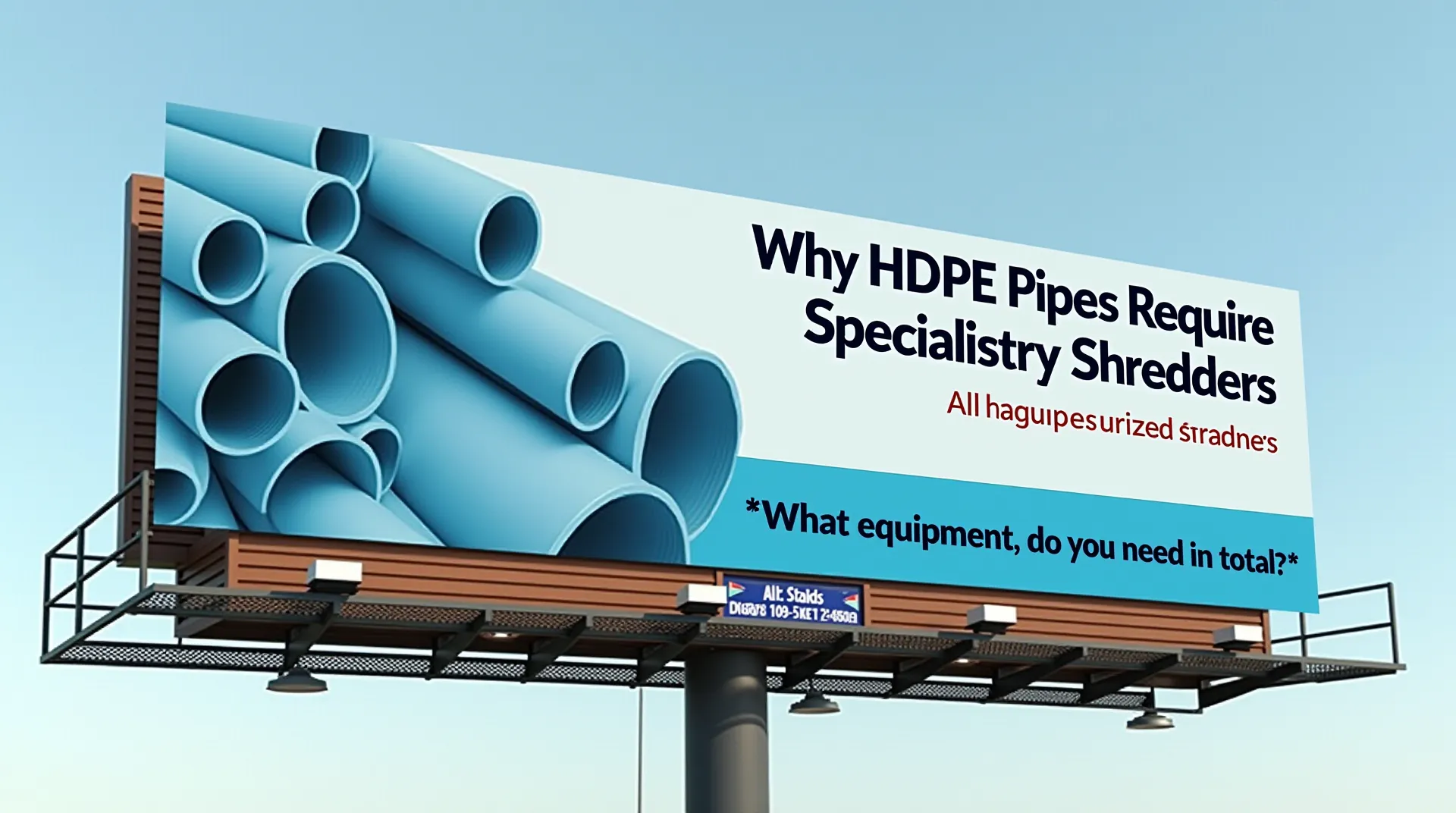Shredding PVC pipes can be a daunting task without the right equipment. Whether you’re managing a recycling facility or running a manufacturing business, investing in a quality PVC pipe shredder is essential. But with so many options on the market, how do you select the best shredder for your specific needs? In this article, we’ll break down the critical factors you should consider when choosing the right PVC pipe shredder, so you can make an informed decision that balances efficiency, capacity, and cost.
Key Factors to Consider When Choosing a PVC Pipe Shredder
1. Motor Power and Efficiency
The motor is the heart of your shredder, determining its ability to process different sizes and thicknesses of PVC pipes. A more powerful motor means faster shredding, allowing you to process high volumes of material quickly. Typically, PVC pipe shredders come with motor power ranging from 10 HP to over 100 HP, depending on the intended capacity.
For light-duty use, such as small-scale recycling, a shredder with a motor of 20-30 HP may be sufficient. However, industrial operations will need motors with 50 HP or more to handle larger pipes and continuous operation. Keep in mind that a more powerful motor usually translates to higher energy consumption, so look for models that balance power with energy efficiency.
| Motor Power | Ideal Use |
|---|---|
| 10-30 HP | Small recycling or hobby use |
| 30-50 HP | Medium-sized operations |
| 50+ HP | Industrial and high-volume shredding |
2. Blade Design and Quality
The blades are another critical component of the PVC pipe shredder. They determine how clean and efficient the cuts will be. For PVC pipes, which can vary greatly in diameter and thickness, high-quality, hardened steel blades are necessary to ensure durability and longevity.
Look for shredders with easily replaceable or adjustable blades, as these will wear down over time. Some shredders feature multiple rotating blades to provide finer cuts and greater shredding efficiency. Sharpening and maintaining the blades regularly will help maximize the shredder’s performance.
Key Blade Features to Consider:
- Hardened steel for durability
- Multiple rotating blades for finer cuts
- Adjustable blade settings for flexibility
- Easy maintenance and replacement
3. Capacity and Pipe Size
Not all shredders are created equal when it comes to capacity. It’s crucial to match the shredder’s capacity with the size and quantity of PVC pipes you need to process. Capacity is generally measured by the shredder’s feed opening size, which dictates how large of a pipe it can handle. Some shredders are designed for smaller pipes up to 6 inches in diameter, while industrial shredders can process pipes larger than 20 inches in diameter.
In addition to size, consider the throughput rate, which refers to how much material the shredder can process in a given amount of time. If you’re shredding large quantities of PVC, look for a model that can handle a high throughput.
| Feed Opening Size | Max Pipe Diameter |
|---|---|
| 12″ | 6-10 inches |
| 24″ | 10-20 inches |
| 48″ | 20+ inches (industrial use) |
4. Durability and Maintenance
Durability should be at the forefront of your decision-making process. A well-constructed PVC pipe shredder will not only save you money on repairs but also minimize downtime. Look for shredders built with heavy-duty materials like steel or cast iron to withstand continuous operation.
Maintenance is another key aspect. Shredders with easily accessible components, such as removable blades and motors, are simpler to maintain. Additionally, some models offer self-cleaning mechanisms, which can save significant time.
5. Safety Features
Operating a PVC pipe shredder can pose safety risks if proper precautions aren’t taken. That’s why it’s important to choose a shredder with robust safety features. Look for models with emergency stop buttons, safety interlocks, and overload protection systems. A shredder with automatic shutdown in case of jams can also prevent motor damage and ensure worker safety.
6. Cost and Return on Investment (ROI)
Lastly, consider the total cost of the shredder, including its initial price, operating costs, and maintenance requirements. While high-end models may come with a hefty price tag, they often pay off in the long run by reducing labor and maintenance costs and improving operational efficiency. It’s essential to strike a balance between upfront investment and long-term savings.
Cost Considerations:
- Initial purchase price
- Energy consumption
- Blade replacement and maintenance
- Warranty coverage
7. Additional Features to Enhance Efficiency
Some shredders come with advanced features designed to optimize performance. These include automatic feeding systems, noise reduction technology, and dust collection systems, which can make your shredding operations smoother and cleaner. While these features might add to the initial cost, they can significantly improve the efficiency and safety of your facility.
Conclusion
Choosing the right PVC pipe shredder requires careful consideration of your operational needs, the type and size of pipes you’re processing, and your long-term goals for efficiency and cost management. By evaluating the motor power, blade design, capacity, and safety features, you can make an informed decision that will boost your productivity and ensure a solid return on investment.
A PVC pipe shredder is a major investment, but choosing wisely will save you time, money, and effort in the long run. Be sure to explore options and consult with suppliers who can provide recommendations tailored to your specific needs.



